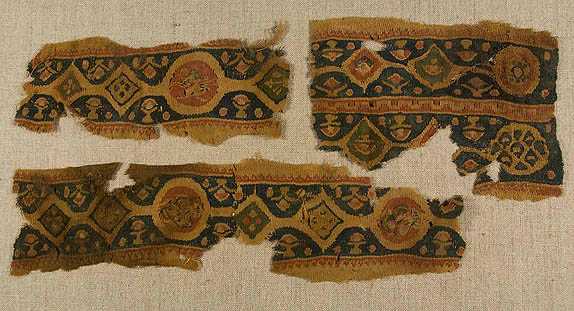Egyptian Textile Museum
The Egyptian Textile Museum: History of Egypt Through Fabrics
-
121 El Muez St.
-
Museums
-
Melissa Howell

Long before Egypt
was known worldwide for its cotton, Egyptians coveted linen and wool, using
these textiles for everything from clothing and bedding to paying taxes with. To learn more than you thought there was to
know about the history of Egyptian textiles, head to Muezz
El Din Street and check out the Egyptian
Textile Museum.
The location of this museum may give some people cause for worry. The Egyptian Textile
Museum sits just outside of
Khan
El Khalili where people– especially tourists– are known to get fooled and
even robbed of their money if they aren’t careful. However, you can be assured that
the Textile Museum is no rip-off. For a more than
reasonable price, a tour through the museum offers an extensive history of Egypt
through textiles.
Two floors– almost overwhelming in size– hold an immaculately
maintained collection of textiles, tools and other artefacts. The lights are
low to protect the pieces, and the whole museum is temperature- and humidity-controlled!
The Egyptian Textile
Museum may indeed be one of the best-cared-for
museums in Cairo.
Extremely user-friendly, the museum provides lots of information to its
visitors. Each room has several columns or wall sections plastered with
historical facts relevant to the room’s time period in both Arabic and English.
Also impressive are the placards of information for nearly every piece,
detailing the items’ original use, dates and location of origin where possible.
The first few rooms of the Egyptian
Textile Museum
are devoted to pieces from the Pharaonic Era. The items start off with a few
simple linen shawls, tunics and loin cloths along with information on typical
fashion of the specific periods as well as the Ancient Egyptians’ method of
using natural nitrates found in the desert to bleach their cloths. As the
exhibit continues, pieces become more varied and elaborate with fringe, some
embroidery on shawls and a display case of a primitive bedroom set.
Although the museum is predominately devoted to samples of textiles, a
number of statuettes from Pharaonic Egypt are present. As visitors
reach the end of the Pharaonic section of the museum; burial clothes, shrouds,
and decorative textiles include more colour and detail in surprising dexterity
considering the rudimentary tools shown in this section.
Turn a corner and you will find a very small Graeco-Roman section mostly
containing statues before samples of early Coptic textiles are on display. Here, in the 3rd and 4th centuries AD,
clothing becomes more colourful with different yarns woven into the fabric. Geometric
patterns appear on traditional priest’s attire as well as hats and children’s
clothing. As visitors reach the end of the first floor, they may think that the
exhibit ends here due to lack of obvious signs and a slightly ridiculous
display of a loom manned by a couple of mannequins. However, we all know that Egypt’s
history doesn’t end in 400 AD, and neither does the museum for that matter. Hang
a right and go up to the second floor (a very modern elevator is available for
those that require it), where Egypt’s
history continues to be told through the world of textiles.
Inspired by the floral and geometric embroidery of Coptic designs, the Umayids
used many of the same techniques but changed all Christian imagery to Arabic
calligraphy; a theme still popular to this day. As the exhibit continues, the
beautiful collection of clothing and decorative textiles becomes more
impressive and ornate with a brief step back to the politically volatile years
of Mamluk rule. On the other hand, an increase
in trade during this time also resulted in gorgeous silk work and European-inspired
designs.
A room towards the end of the museum features a massive Kiswab. From
early on in Islamic history until the 20 century, the banners hanging over the Kaaba
in Mecca were made right here in Egypt.
With thick golden thread embellishing the calligraphy over a black backdrop,
this is one of the most stunning pieces in the museum.
Tickets to the Egyptian
Textile Museum
are very reasonably priced at 20LE for foreign adults (10LE for students) and
2LE for Egyptian adults (1LE for students).
The Egyptian Textile Museum
is a must-see spot in Cairo
for visiting tourists or anyone interested in textiles– even if you just need
to brush up on your knowledge Egyptian history before going.
Write your review
recommended
 Restaurants
Restaurants
Cairo's Ramen Revival: 5 Must-Try Bowls Around the City
Asian Food Asian Restaurants Cafés
Cafés



